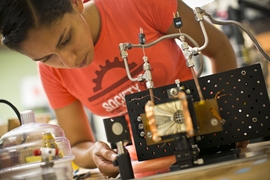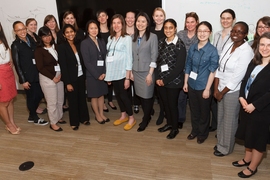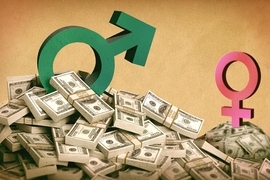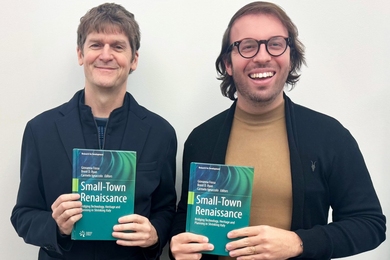Seniors Caroline Chin and Kamilla Tekiela have released a Report on the Status of Undergraduate Women at MIT, a student initiative aimed at assessing gendered differences in academics, leadership, campus environment, and confidence. The report relies on student response data from a 2014 survey designed, administered, and analyzed by the report authors, supplemented with information from four Institute-wide surveys administered between 2011 and 2013.
Together with feedback gathered from six student focus groups, these data reveal that undergraduate women at MIT experience negative stereotyping and feel less confident than men, even though they perform as well or better than their male counterparts on standard metrics of academic success such as GPAs and graduation rates.
“MIT has made great strides towards gender equality since Ellen Henrietta Swallow was admitted as the institution’s first female student in 1871. Today, the gender ratio of the undergraduate population is close to equal — 46 percent of undergraduate students are female,” Chin and Tekiela write in the report. “Despite the even gender distribution, female and male students continue to have different experiences at MIT.”
The report finds differences between undergraduate men and women in high school experience such as writing computer programs, starting a company, and building electrical circuits. However, by the time female students graduate from MIT, they are just as successful as their male peers across many measures. For example, females have statistically higher GPAs and graduation rates than their male counterparts. Furthermore, according to the report, during their time at MIT, females and males are equally likely to receive awards or to publish papers. In 2014, females held 46 percent of the top positions in clubs recognized by MIT’s Association of Student Activities — a percentage in line with the student population.
“While there is much room for improvement, a key takeaway from our report is that females are as successful as their male peers across many dimensions, and should feel confident about their accomplishments,” Tekiela says.
“I commend Caroline and Kamilla for their leadership on, and commitment to, this very important topic,” Chancellor Cynthia Barnhart says. “Their report brings to light some of the different attitudes and experiences in our diverse community, and underscores the importance of continuing our efforts to make MIT a more welcoming and supportive place for all.”
The report points to several areas where gender gaps persist. For example, females are less likely to agree that “the climate and opportunities for female students at MIT are at least as good as those for male students.” They are also less likely to agree that they are “given due credit for the work [they] do outside of academics,” despite being as involved on campus as their male counterparts.
“Our students have shown that achieving gender equity requires more than numbers; it requires continual attention to community and culture in our classrooms, labs, and living groups,” says professor of physics Edmund Bertschinger, who serves as MIT’s Institute Community and Equity Officer. “Like earlier reports on the status of women and minority faculty, this major report helps put MIT on a path to fulfill even better its mission to advance knowledge and educate students.”
“Diversity is becoming an increasingly discussed issue on campuses nationwide,” Chin says. “After writing our report, it’s clear to me that the question is no longer ‘Do female and male students at MIT have different undergraduate experiences?’ Now we know that they do. The question is ‘How do we address these differences?’"
Chin and Tekiela consulted with dozens of MIT administrators, faculty, staff, and students to develop recommendations that address the report’s findings. Some of the key recommendations include:
- developing a mentorship program that allows students to receive guidance in leadership, wellness, or academic fields from alumni volunteers and graduate students with relevant experience;
- establishing more interdisciplinary and flexible majors designed for students whose academic and career goals demand greater breadth; and
- offering short-term workshops to narrow the differences in high school experience, specifically in programming, business, building machines, and other technical skills.
“Kamilla and Caroline’s report serves as an important reminder that we must continually strive to ensure that all MIT students receive equal opportunities, encouragement, and recognition for their achievements,” Dean for Undergraduate Education Dennis Freeman says. “I look forward to working with faculty, staff, and students to address the important issues raised in this report, and to level the playing field for all of our students.”
Read the full Report on the Status of Undergraduate Women at MIT, including an executive summary, a description of the methodology, and data and analysis.












